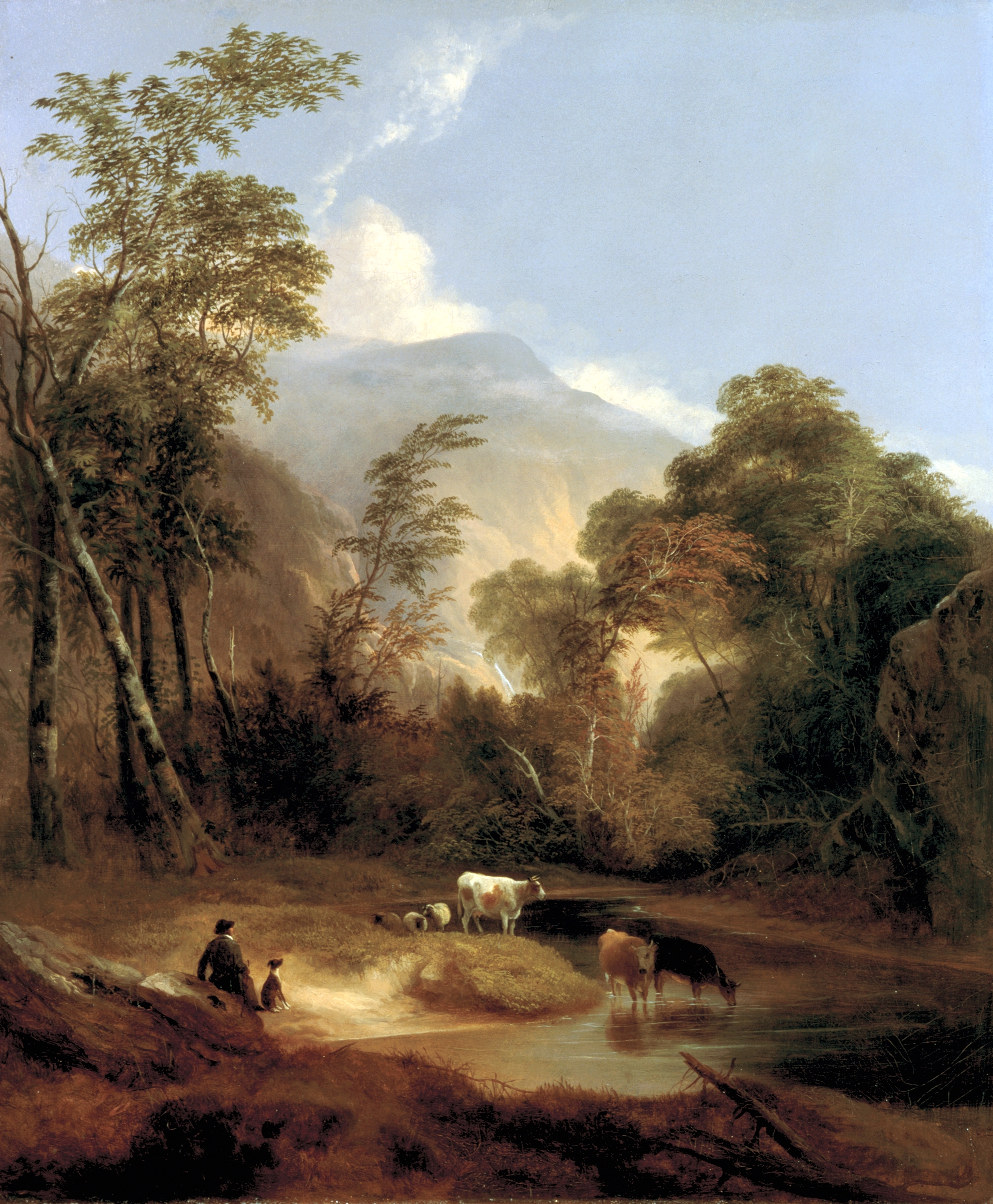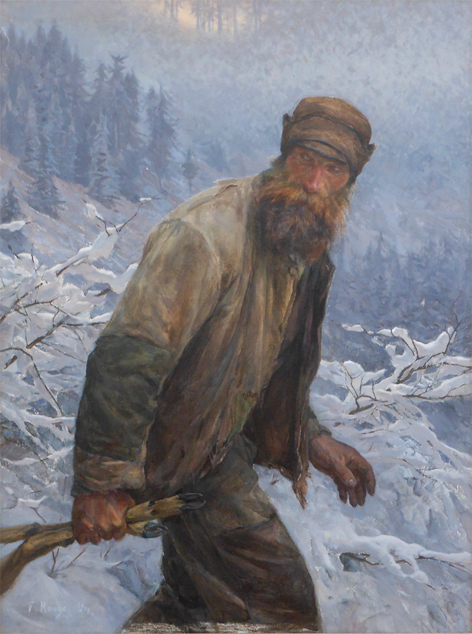|
Boodarie Station
Boodarie Station is a pastoral lease that was once a sheep station but now operates as a cattle station in Western Australia. It is located approximately south west of Port Hedland and north east of Karratha on the Turner River in the Pilbara region of Western Australia. Fred Arunder and Charlie Upton initially took up the Boodarie lease circa 1880. A homestead was also constructed prior to 1880, but a more substantial building completed circa 1910. The property was exporting wool by sea in 1888, with the natural harbour and landing being regarded as a good place to land cargo. The property is currently owned by BHP. The company were leasing out the land to Michael Thompson of neighbouring Mundabullangana Station in 2015 to graze his cattle on. Following a series of incidences of poaching and arson in 2015 costing Thompson $100,000, he closed the gates to Mundabullangana and employed guards to keep the public out. See also *List of ranches and stations *List of pastoral ... [...More Info...] [...Related Items...] OR: [Wikipedia] [Google] [Baidu] |
Sheep Station
A sheep station is a large property ( station, the equivalent of a ranch) in Australia or New Zealand, whose main activity is the raising of sheep for their wool and/or meat. In Australia, sheep stations are usually in the south-east or south-west of the country. In New Zealand the Merinos are usually in the high country of the South Island. These properties may be thousands of square kilometres in size and run low stocking rates to be able to sustainably provide enough feed and water for the stock. In Australia, the owner of a sheep station may be called a pastoralist, grazier; or formerly, a squatter (as in "Waltzing Matilda"), when their sheep grazing land was referred to as a sheep run. History Sheep stations and sheep husbandry began in Australia when the British colonisers started raising sheep in 1788 at Sydney Cove. Improvements and facilities In the Australian and New Zealand context, shearing involves an annual muster of sheep to be shorn, and the shearing ... [...More Info...] [...Related Items...] OR: [Wikipedia] [Google] [Baidu] |
Mundabullangana
Mundabullangana is a settlement in Western Australia, located approximately 100 km south-west of Port Hedland. It is the site of a 225,000 hectare cattle station. Mundabullangana is more commonly known as Munda Station. In 1872, brothers Roderick Louden MacKay and Donald McDonald MacKay, then their younger brother Donald MacKay and his son, Samuel Peter Mackay, took up a tract of country on the Yule River, where there was a good pool of permanent water, bearing the Aboriginal name ''Mundabullangana''. Although for most of its history Mundabullangana was predominantly a sheep station, in 1985, long after it passed out of the MacKay family, it was destocked in favour of cattle. The station originally occupied an area of and by 1903, following the death of his father, Samuel Mackay became the sole owner of the station. Mundabullangana Station is significant in the occupation of the north-west of Western Australia as the first pastoral lease taken up by European settlers in ... [...More Info...] [...Related Items...] OR: [Wikipedia] [Google] [Baidu] |
Stations (Australian Agriculture)
Station may refer to: Agriculture * Station (Australian agriculture), a large Australian landholding used for livestock production * Station (New Zealand agriculture), a large New Zealand farm used for grazing by sheep and cattle ** Cattle station, a cattle-rearing station in Australia or New Zealand **Sheep station, a sheep-rearing station in Australia or New Zealand Communications * Radio communication station, a radio frequency communication station of any kind, including audio, TV, and non-broadcast uses ** Radio broadcasting station, an audio station intended for reception by the general public ** Amateur radio station, a station operating on frequencies allocated for ham or other non-commercial use ** Broadcast relay station ** Ground station (or Earth station), a terrestrial radio station for extraplanetary telecommunication with satellites or spacecraft ** Television station * Courier station, a relay station in a courier system ** Station of the ''cursus publicus'', a sta ... [...More Info...] [...Related Items...] OR: [Wikipedia] [Google] [Baidu] |
Pastoral Leases In Western Australia
A pastoral lifestyle is that of shepherds herding livestock around open areas of land according to seasons and the changing availability of water and pasture. It lends its name to a genre of literature, art, and music (pastorale) that depicts such life in an idealized manner, typically for urban audiences. A ''pastoral'' is a work of this genre, also known as bucolic, from the Greek , from , meaning a cowherd. Literature Pastoral literature in general Pastoral is a mode of literature in which the author employs various techniques to place the complex life into a simple one. Paul Alpers distinguishes pastoral as a mode rather than a genre, and he bases this distinction on the recurring attitude of power; that is to say that pastoral literature holds a humble perspective toward nature. Thus, pastoral as a mode occurs in many types of literature (poetry, drama, etc.) as well as genres (most notably the pastoral elegy). Terry Gifford, a prominent literary theorist, define ... [...More Info...] [...Related Items...] OR: [Wikipedia] [Google] [Baidu] |
List Of Pastoral Leases In Western Australia
Pastoral leases in Western Australia are increasingly known as "stations", and more particular – as either sheep stations or cattle stations. They are usually found in country that is designated as rangeland. In 2013 there were a total of 527 pastoral leases in Western Australia. And all leases were put up for renewal or surrender in 2015. Stations/pastoral leases are a significant part of Western Australian history. At different stages inquiries, pleas for extensions of lease times and royal commissions have been made into the industry. Nearly 90 million hectares or 36% of the area of Western Australia are covered by these stations. Despite the very low population involved in general management of stations, significant numbers of seasonal workers (shearers and others) have moved through the sheep stations to shear for wool. Also more recently stations have been used as holding places of feral goats for export and meat production. Administration The current administration ... [...More Info...] [...Related Items...] OR: [Wikipedia] [Google] [Baidu] |
List Of Ranches And Stations
This is a list of ranches and sheep and cattle stations, organized by continent. Most of these are notable either for the large geographic area which they cover, or for their historical or cultural importance. West Africa *Obudu Cattle Ranch * SODEPA cattle ranches in Cameroon Australia ''Station'' is the term used in Australia for large sheep or cattle properties. New South Wales * Borrona Downs Station *Brindabella Station * Caryapundy Station * Cooplacurripa Station * Corona Station *Elsinora *Momba Station * Mount Gipps Station * Mount Poole Station *Mundi Mundi *Nocoleche * Oxley Station *Poolamacca Station *Salisbury Downs Station * Sturts Meadows Station *Thurloo Downs * Toorale Station *Uardry *Urisino *Yancannia Station Northern Territory * Alexandria Station *Ambalindum *Alroy Downs *Amburla *Amungee Mungee *Andado *Angas Downs Indigenous Protected Area *Anthony Lagoon * Argadargada Station *Austral Downs *Auvergne Station * Ban Ban Springs Station *Banka Banka Station ... [...More Info...] [...Related Items...] OR: [Wikipedia] [Google] [Baidu] |
ABC News (Australia)
ABC News, or ABC News and Current Affairs, is a public news service produced by the Australian Broadcasting Corporation. Broadcasting within Australia and the rest of the world, the service covers both local and world affairs. The division of the organisation, which is called ABC News, Analysis and Investigations. is responsible for all news-gathering and coverage across the Australian Broadcasting Corporation's various television, radio, and online platforms. Some of the services included under the auspices of the division are the ABC News TV channel (formerly ABC News 24); the long-running radio news programs, '' AM'', '' The World Today'', and '' PM''; ABC NewsRadio, a 24-hour continuous news radio channel; and radio news bulletins and programs on ABC Local Radio, ABC Radio National, ABC Classic FM, and Triple J. ABC News Online has an extensive online presence which includes many written news reports and videos available via ABC Online, an ABC News mobile app (ABC Liste ... [...More Info...] [...Related Items...] OR: [Wikipedia] [Google] [Baidu] |
Arson
Arson is the crime of willfully and deliberately setting fire to or charring property. Although the act of arson typically involves buildings, the term can also refer to the intentional burning of other things, such as motor vehicles, watercraft, or forests. The crime is typically classified as a felony, with instances involving a greater degree of risk to human life or property carrying a stricter penalty. Arson which results in death can be further prosecuted as manslaughter or murder. A common motive for arson is to commit insurance fraud. In such cases, a person destroys their own property by burning it and then lies about the cause in order to collect against their insurance policy. A person who commits arson is referred to as an arsonist, or a serial arsonist if arson has been committed several times. Arsonists normally use an accelerant (such as gasoline or kerosene) to ignite, propel and directionalize fires, and the detection and identification of ignitable liqui ... [...More Info...] [...Related Items...] OR: [Wikipedia] [Google] [Baidu] |
Poaching
Poaching has been defined as the illegal hunting or capturing of wild animals, usually associated with land use rights. Poaching was once performed by impoverished peasants for subsistence purposes and to supplement meager diets. It was set against the hunting privileges of nobility and territorial rulers. Since the 1980s, the term "poaching" has also been used to refer to the illegal harvesting of wild plant species. In agricultural terms, the term 'poaching' is also applied to the loss of soils or grass by the damaging action of feet of livestock, which can affect availability of productive land, water pollution through increased runoff and welfare issues for cattle. Stealing livestock as in cattle raiding classifies as theft, not as poaching. The United Nations' Sustainable Development Goal 15 enshrines the sustainable use of all wildlife. It targets the taking of action on dealing with poaching and trafficking of protected species of flora and fauna to ensure their avail ... [...More Info...] [...Related Items...] OR: [Wikipedia] [Google] [Baidu] |
The West Australian
''The West Australian'' is the only locally edited daily newspaper published in Perth, Western Australia. It is owned by Seven West Media (SWM), as is the state's other major newspaper, ''The Sunday Times''. It is the second-oldest continuously produced newspaper in Australia, having been published since 1833. It tends to have conservative leanings, and has mostly supported the Liberal–National Party Coalition. It has Australia's largest share of market penetration (84% of WA) of any newspaper in the country. Content ''The West Australian'' publishes international, national and local news. , newsgathering was integrated with the TV news and current-affairs operations of ''Seven News'', Perth, which moved its news staff to the paper's Osborne Park premises. SWM also publish two websites from Osborne Park including thewest.com.au and PerthNow. The daily newspaper includes lift-outs including Play Magazine, The Guide, West Weekend, and Body and Soul. Thewest.com.au is the on ... [...More Info...] [...Related Items...] OR: [Wikipedia] [Google] [Baidu] |
Cattle Station
In Australia and New Zealand, a cattle station is a large farm ( station is equivalent to the American ranch), the main activity of which is the rearing of cattle. The owner of a cattle station is called a '' grazier''. The largest cattle station in the world is Anna Creek Station in South Australia, which covers an area of . Improvements Each station has a homestead where the property owner or the manager lives. Nearby cottages or staff quarters provide housing for the employees. Storage sheds and cattle yards are also sited near the homestead. Other structures depend on the size and location of the station. Isolated stations will have a mechanic's workshop, schoolroom, a small general store to supply essentials, and possibly an entertainment or bar area for the owners and staff. Water may be supplied from a river, bores or dams, in conjunction with rainwater tanks. Nowadays, if rural mains power is not connected, electricity is typically provided by a generator, although sol ... [...More Info...] [...Related Items...] OR: [Wikipedia] [Google] [Baidu] |
The Inquirer & Commercial News
''The Inquirer & Commercial News'' was a newspaper published in Perth, Western Australia from 1855 to 1901. In May 1847, Edmund Stirling acquired ''The Inquirer'' from Francis Lochée, who established the paper in August 1840 together with William Tanner. Tanner disposed of his interest in the paper in June 1843. In July 1855, ''The Inquirer'' merged with ''The Commercial News and Shipping Gazette'', which was owned by Robert John Sholl, to form ''The Inquirer & Commercial News'', in the joint ownership of Sholl and Stirling. Stirling's eldest son John joined the paper around 1863 and operated the paper with his father when Sholl left. In 1878, Stirling's three other sons Horace, Frederick and Baldwin joined the paper, trading as Stirling & Sons. When Stirling retired, his three sons took control of the paper as Stirling Bros. On 6 July 1886, it incorporated the ''Morning Herald''. On 17 February 1893, the paper changed format and became the ''Inquirer and Commercial News Illustr ... [...More Info...] [...Related Items...] OR: [Wikipedia] [Google] [Baidu] |





